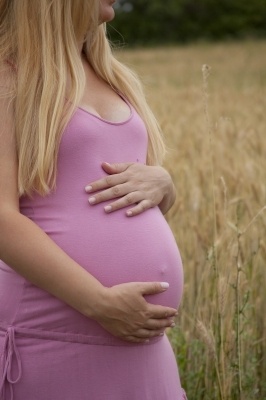Too many women in Scotland are failing to follow current advice on vitamin D supplement use in pregnancy. This is leading to very low levels in some mothers and newborns, particularly in the winter months, and the problem is greatest in mothers from the poorest areas.
This is the conclusion of a study led by Professor Paul Haggarty at the University of Aberdeen’s Rowett Institute of Nutrition and Health, and published in the British Journal of Nutrition.
The researchers recommend that more should be done to improve the uptake of current advice on vitamin D supplements, but they also suggest that promoting safe sun exposure and access to green spaces in summer could be a useful additional strategy, even in the north of Scotland.
Vitamin D is synthesised in the body when skin is exposed to sunlight of a certain wavelength. However, in the UK during winter months, the required UV-B radiation can be insufficient to adequately support vitamin D synthesis in the body, and this lasts longer the further north the person lives.
In Scotland, the relative lack of sunshine at northern latitudes has led to concern over the vitamin D status of the population in general, and of pregnant women in particular.
The UK Scientific Advisory Committee on Nutrition is currently undertaking a review of vitamin D requirements and recommendations for the public, including those with special needs such as pregnant women.
Currently, pregnant and breastfeeding women in the UK are advised to take daily supplements of vitamin D to protect against deficiency, but the success of this advice has not previously been studied in Scotland.
So the research team carried out a study of vitamin D in 1,205 pregnancies at Aberdeen Maternity Hospital, Scotland between 2000 and 2006.
The aims were to determine vitamin D status in mothers and newborns (through cord blood) in a large population in the northeast of Scotland (latitude 57 deg North) The team evaluated the influence of season, vitamin D intake from diet and supplements, compliance with current advice on supplement use, and the effect of deprivation.
Mothers provided a blood sample at 19 weeks and cord blood samples were collected from the baby at delivery. The mothers also provided information about their diet – and use of supplements - through a questionnaire. The vitamin D analysis was carried out at the University of Glasgow.
The team found that
- 21% of the mothers in Aberdeen reported taking any vitamin D supplements in pregnancy and only 1% were taking the recommended amount
- Mothers taking supplements had a higher level of vitamin D in their blood, but this did not show up in blood samples from the cord
- There was a strong seasonal variation in the mother’s vitamin D level, with a much higher level from May to September.
- The levels of supplement use in Scotland were not very different from those previously reported for pregnant women in the south of England (Southampton) but the levels of vitamin D were lower in Scotland.
Professor Paul Haggarty, who led the research, said: “We need to do more to encourage women to take vitamin D supplements during pregnancy, particularly women from more deprived backgrounds. Realistically however, if every pregnant woman in the study followed the advice perfectly about 8% would still be deficient in vitamin D.
“Those women most likely to benefit from supplements are also those least likely to follow advice on diet and supplements, due to circumstances related to deprivation. They appear to be doubly disadvantaged in that they are also less likely to visit green spaces and may have limited opportunities to holiday in sunnier climates.
“We suggest that, in addition to guidance on supplement use, encouraging safe sun exposure and getting out into green spaces in summer may help to improve vitamin D status in pregnancy, even in the north of Scotland.
“We need to investigate this further through a trial of safe sun advice in the critical summer months at northern latitude to assess the impact on the vitamin D status of the mother during pregnancy and while breastfeeding, and of the baby, in pregnancies commencing in different seasons of the year.”
The work was funded by the Scottish Government Directorate of Health and Wellbeing, and theRural and Environment Science and Analytical Services Division.


